the decline
Population declines in birds are the product of breeding productivity (the number of fledged young per nesting attempt); the survival of adults between breeding seasons; and the survival of juvenile birds before they are recruited into the breeding population.
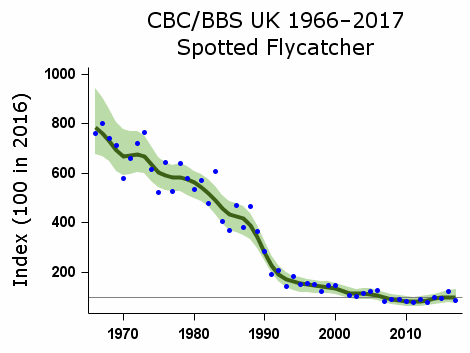
There were eight times as many Spotted Flycatchers in Britain and Ireland before 1970 as there are nowadays.
productivity, predation, juvenile survival
According to BTO BirdTrends, this is partly a result of a decline in flycatcher breeding productivity, with avian predators – and mainly Jays – the main cause of nest-losses in all habitats. Higher rates of predation in woodland and farmland (perhaps linked to increases in corvid populations) mean that productivity in gardens is usually higher than elsewhere.
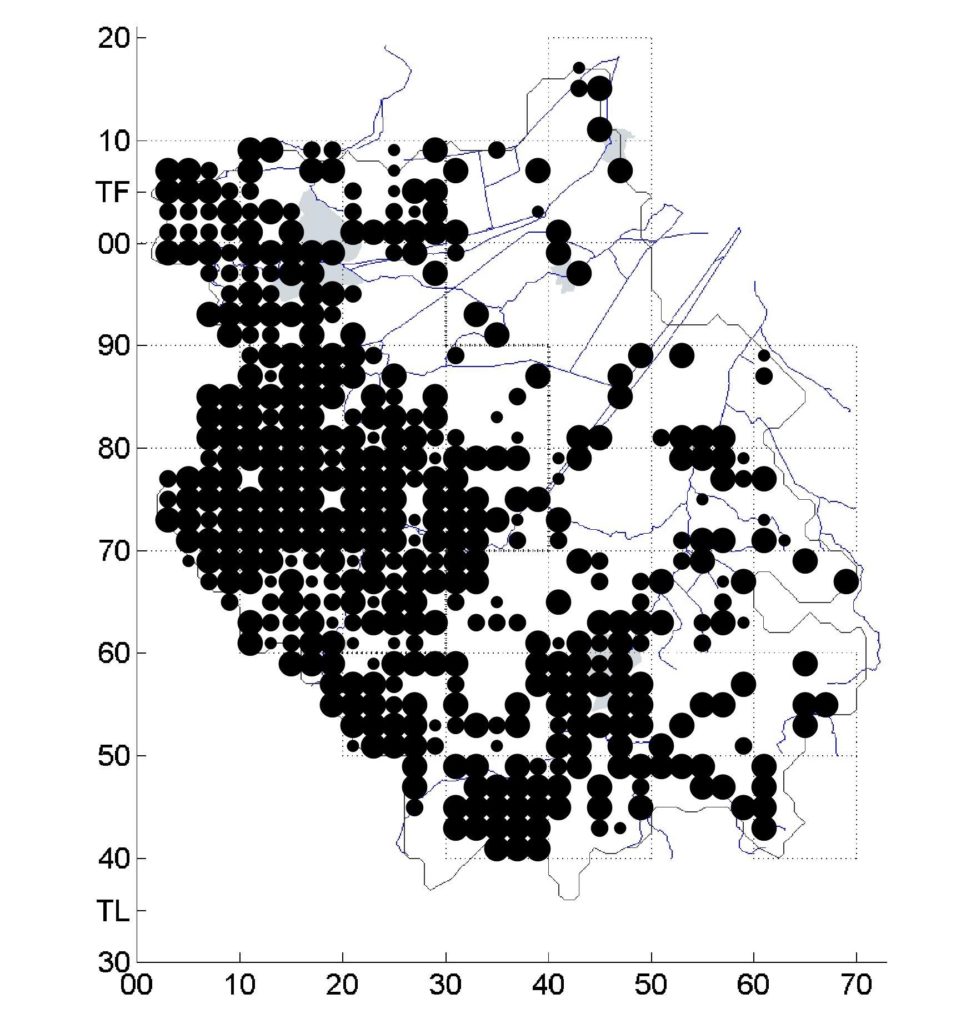
Cambridgeshire in the 70s and 80s 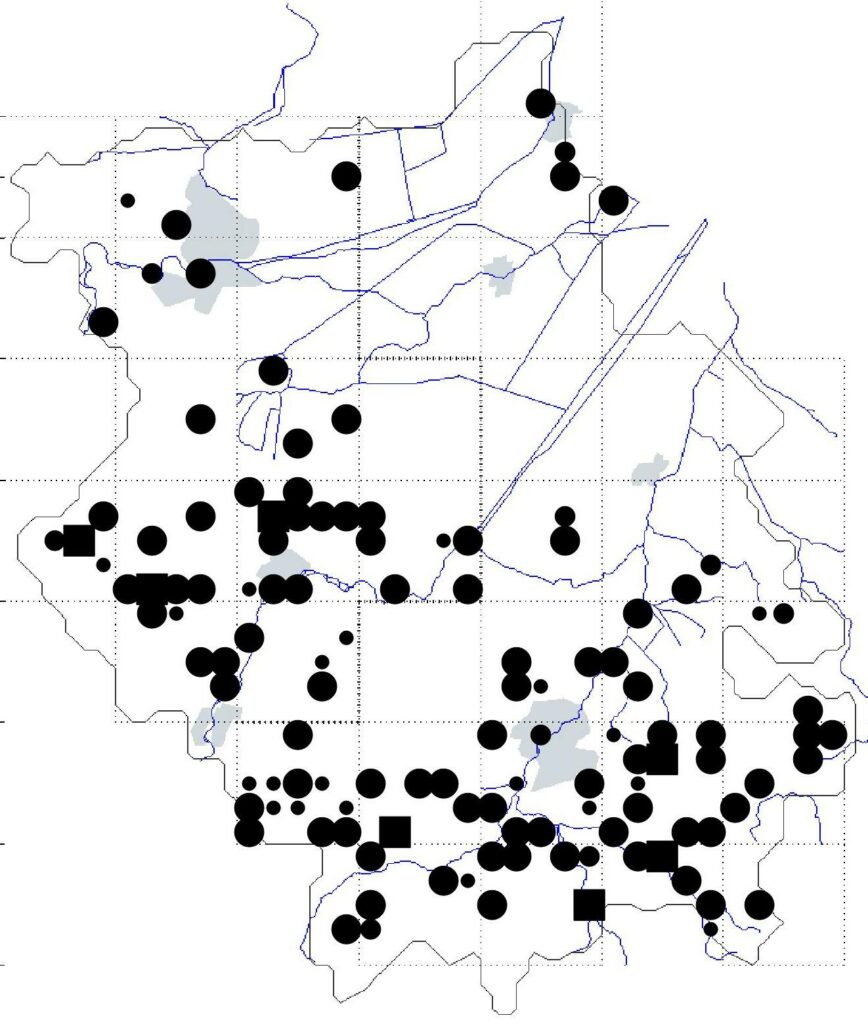
Cambridgeshire now
Reduced survival of first-year birds is, however, thought to be the main demographic factor behind the decline. Lower juvenile survival might result from the overall reduction in available invertebrate food throughout Britain and Ireland; this may be particularly important in deteriorating woodland quality in the immediate post-fledging period.
problems migrating or over-wintering
Or conditions – weather, human pressure, or food availability – may be less favourable, on migration or in the winter quarters. Spotted Flycatchers are one of several long-distant migrants (such as Turtle Doves and Cuckoos) wintering in or migrating through the humid zone of West Africa that are currently in steep decline. This suggests that their decline may have a common cause.
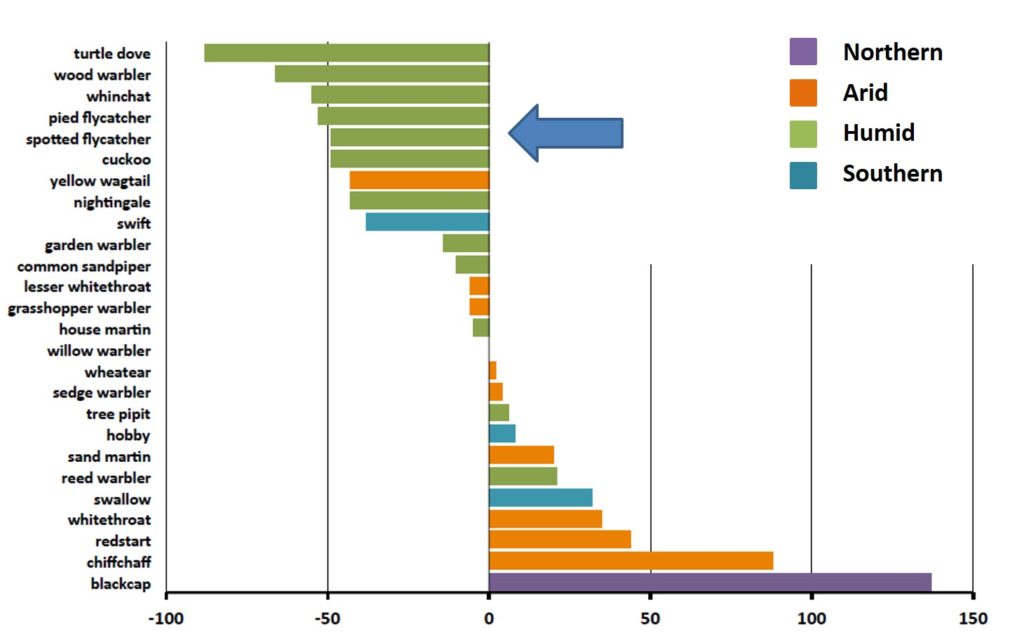
an uneven decline?
In addition, there is some evidence that some of these migrants are doing better in the north and west of Britain and Ireland than in the south and east.

A similar pattern is possibly shown in the flycatcher abundance maps. This may be a function of conditions in the breeding season: changing climatic conditions (particularly rainfall); differences in farming (mixed vs arable, pesticide use); or differential rates of decline in large flying insect populations.
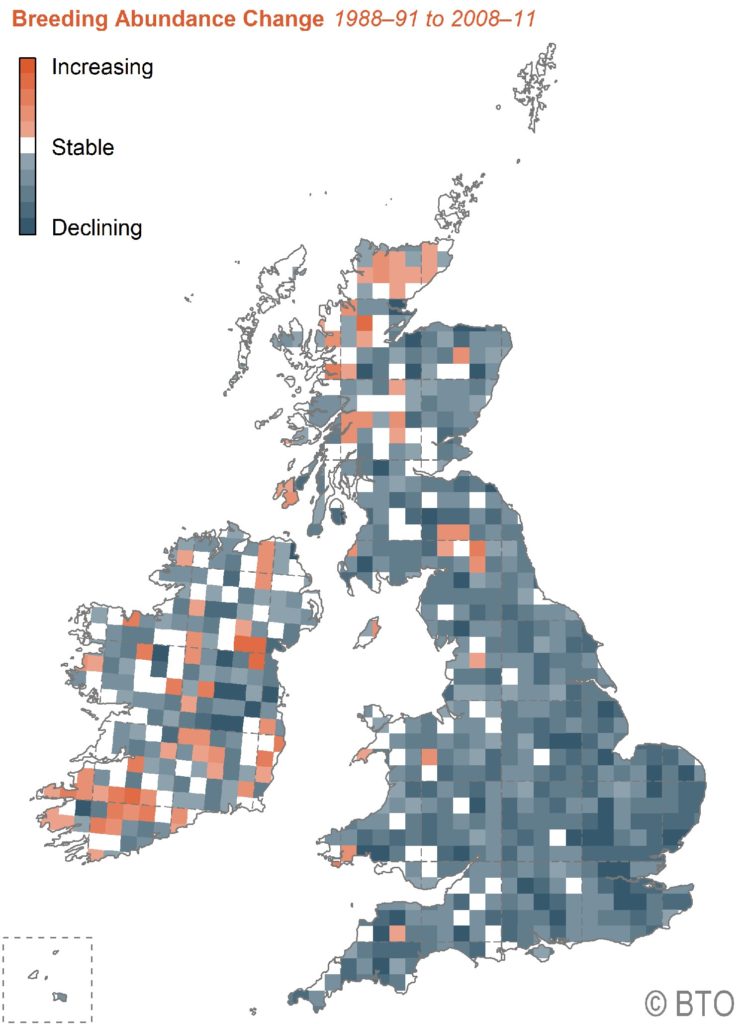
An additional purpose of the geolocator project is to establish whether these populations from different parts of Britain and Ireland are employing different migration strategies or using different wintering areas; and whether this may be another or supplementary cause of, or factor in, differential survival.
[The text and maps above are derived from the BTO’s published research and in particular
Bird Atlas 2007-11
The breeding and wintering birds of Britain and Ireland
(Dawn Balmer et al. 2013).]
